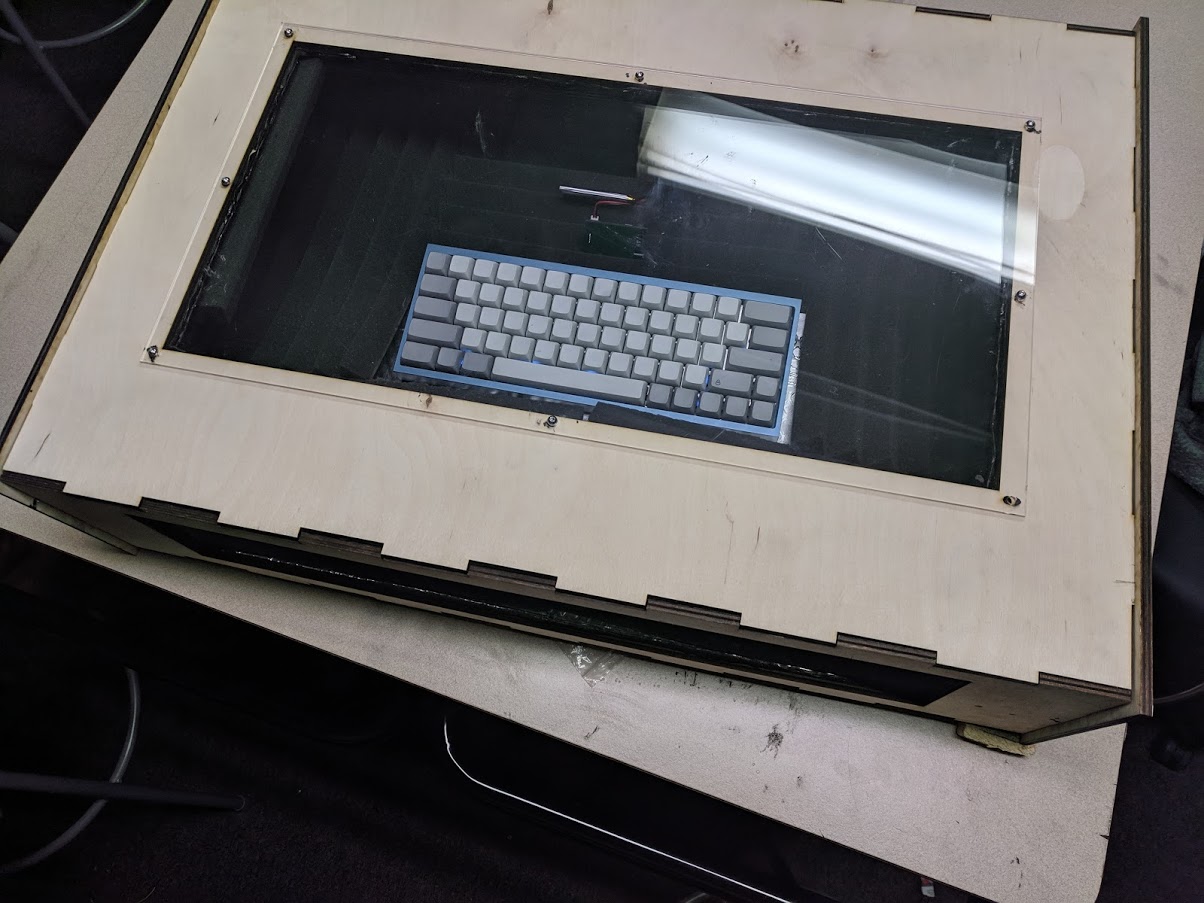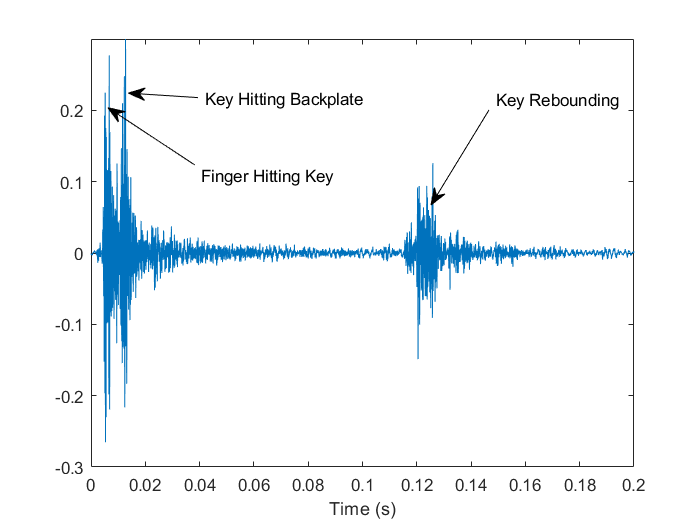Kevin
Accomplishments
-
- This week I helped james build a soundproof box he designed. The inside of the box is lined with two layers of a sound deadening material. In the images below this is the silver layer. It is a dense material which is made to absorb sounds for vehicles.
- There is an acrylic window on top, so the user can see the keyboard, which is two layers thicks. There is an air gap between the layers to try and further increase sound isolation.
- The box is closed on all sides except where the user inserts their hands. The closed sides are tightly held together to improve sound isolation.
- The sound proofing material creates significant echoes inside the box since the sound cannot leave easily. To fix this we padded the inside with sound absorbing foam. This is very light material and often used in home studios help with reducing reflecting sounds
- The sound proofing box is quite effective. We found it can reduce the noise level by 15dB, using an app on my phone to test. We hope this box will help increase our accuracy by significantly reducing the noise in the loud demo environment.



Upcoming Work
Next week is the final demo and report. We will be spending our time finalizing our demo and writing the report.
James
Accomplishments
-
- This week, I designed a sound proofing box to help keep the noise levels at moderate, quiet office levels during the demo. The box is 26inches x 18inches x 6inches and can house full sized keyboards. An acrylic window was cut into the top to allow easy viewing of the keyboard.
- I wrote a simplified version of the code for the demo, allowing for quick input of a recording of an audience member’s typing.
Upcoming work
The only upcoming work is the demo and the final report. We will also record a demonstrative video in case the noise levels in the demo room make effective classification impossible.
Ronit
Accomplishments
- Built the sound proof box and evaluated its effectiveness by collecting data and trying to infer passwords.
- We found that the box reduces outside noise by about 20 dB.
- Setup the esp32 for demo, temporarily disabled power saving mode. (the demo room will be too noisy for the esp to go to sleep).
- Tested the project against a mechanical keyboard. We found that our algorithm works better for membrane keyboards, but this might be because we tuned our parameters for a membrane keyboard.
- Performed user tests(with people other than me kevin and james).
- Worked on video for demo, in case te demo does not work in the noisy demo room.
- Worked on final report.
Upcoming work
- Work on the final report.
Team Status
Accomplishments
-
- This week, the team worked closely together to construct a soundproofing box to try to maintain a moderate sound level during the demo.
- Slightly simplified versions of the signal processing and ESP32 code were written to allow for a more demonstrable project.
Upcoming work
In the next week, we will be demoing our project and writing the final report.




